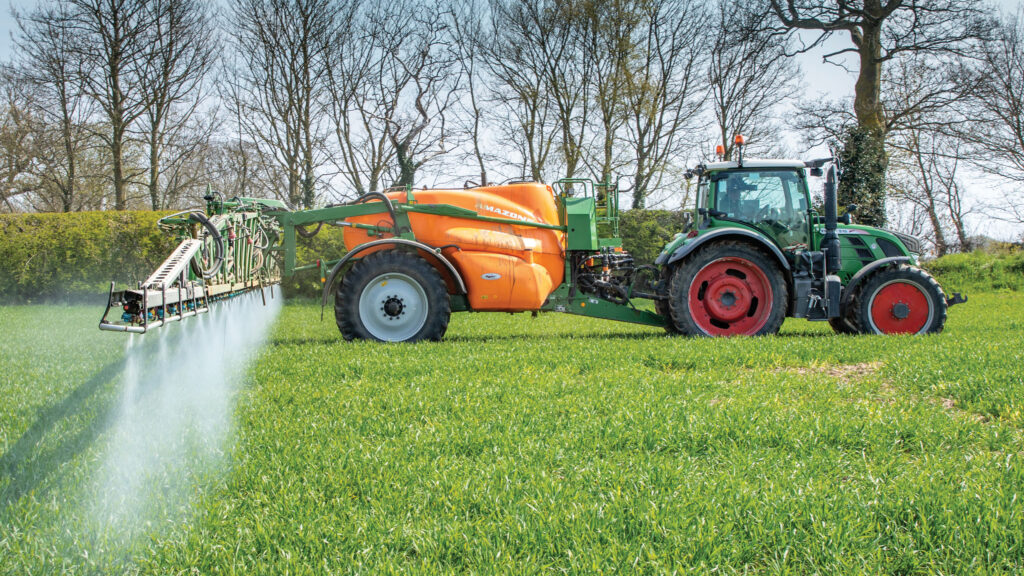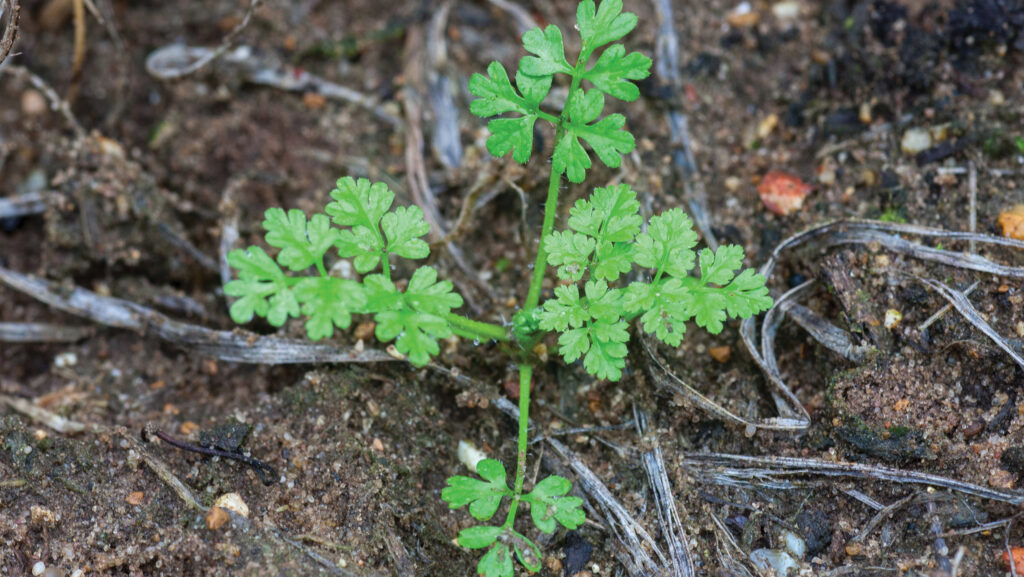Crop Watch: Wheat fungicide plans and maize drilling debate
 © GNP
© GNP The dry spell continues and in complete contrast to the past two springs, farmers are well on with their spring work. In fact, Scottish growers are five weeks ahead of where they were last year.
Drier conditions have started the debate in the South West on when to drill maize crops, and with the forecast set to be dry for the next 10 days there could be quite an area drilled in mid-April this year.
See also: Why one farmer believes calcium is king of soil nutrients
East
Ryan Baker, Frontier
Suffolk/Norfolk
Now the weather has set in dry, the majority of beet has been established into pleasing seed-beds. In contrast to last year, most of the crop has been drilled in March.
Care has been taken on whether to roll any cloddy areas.
In this geography, vining peas are also going in apace. There have still been some frosts in the past couple of weeks and attention has been required for scheduling the drilling.
It is fair to say wheat crops are variable, both within field and between fields. In years such as this it is crucial to remember the importance of the lower leaves.
Gout fly damage has also been prevalent – promoting tillering is the best response.
The T1 spray is fast approaching and leaf three should be the target of this application.
It can contribute 8% of final yield and this spring we have the biggest selection of fungicides that I can remember in my career.
We have strong options from all of the key manufacturers and can, therefore, hand pick the appropriate actives based on disease risk.
As yet I have seen no brown rust in wheat and the only yellow rust has been in a forward crop of triticale.
It is important to remember some actives, such as Vimoy (isoflucypram), have restrictions preventing their use in consecutive wheat crops.
With a potentially strong reliance on SDHIs at both T1 and T2, folpet will form an important part of a broader resistance management strategy.
Other cereals
Winter barley, rye and oats are all pushing through their growth stages.
Hybrid rye for anaerobic digestion has already received a strong start to its plant growth regulator programme, along with broad-leaved weed control.
Oats have already received the majority of contact herbicides solo to avoid the complex tank mixes that can impact the crop.
Also like wheat, there are several good options for T1 sprays in barley. An SDHI-azole-strobilurin mix at T1 gives a good broad-spectrum control of key barley diseases.
Oilseed rape is increasing in height by the day. Mid flower is likely to be around the middle of the month.
I have seen very few pollen beetle so far, so hopefully, warmer temperatures will mean the crop comes into flower quickly.
With an overreliance on prothioconazole in oilseed rape, it is nice to have the option of a non-azole option at this timing.
South
Justin Smith, Procam
East Sussex
Winter wheat T0 fungicides are upon us, and septoria is evident in most varieties. At present, rust doesn’t seem as prominent as it was this time last year in the far-eastern corner. That’s not to say I am being naive.
On those wheats with a low rust rating, my T0 fungicides comprise a robust rate and combination of azoles with and without strobilurins.
It is important to stress the importance of protecting not only the actives, but your investment.
I appreciate that’s easy for an “agronomist” to say, but not only can decent rates pay you back in the short term, but they can also help mitigate resistance issues for all of us in the long term.
Heavy reliance on actives such as tebuconazole for rust prevention over the past few years has led to many people being disappointed with the end results.
Diseases can escalate quickly and continual exposure of low rates of key actives to pathogens can lead to actives breaking down in efficacy and eventually dropping out of the toolbox altogether.
Azoles and strobilurins still provide great value on many key diseases, not to mention the physiological and rooting benefits of some making them even more cost effective.
To this effect, I am looking towards azoxystrobin to not only provide good early rust protection, but also encourage healthy root mass for many of these late-drilled cereals that until recently have not needed to develop deep roots.
Alongside managing lodging prevention, growth regulators such as trinexapac, prohexadione and chlormequat will play their part in this rooting effect argument too.
Oilseed rape
Winter oilseed rape crops remain tricky to preside over, with many in my area not justifying an early stem extension fungicide and instead simply needing further weed control as canopies remain open and uncompetitive.
Spring drillings continue in earnest and seed-bed qualities overall have been excellent, leading me to make more use of pre-emergence herbicides than usual, especially where problematic weeds such as annual meadow grass and groundsel persist.
Tower (chlorotoluron + pendimethalin + diflufenican) at 2 litres/ha has been my go-to on both spring barley and spring wheat.
Finally, I have to admit saying recently: “We could do with some warm April showers!”
West
Dominic Edmond, Matford Arable
Devon/Cornwall
At the end of my last Crop Watch report I was hoping for a quiet March weather wise, so I guess it was always going to be a case of careful what you wish for.
At home in east Devon, I’ve recorded 2mm of rain in the past four weeks, and while some parts of Devon and Cornwall have recorded more, overall, it has been a dry, relatively cold month.
On the plus side it’s been fantastic to be able to get on the ground and manage crops as they need to be.
The benefits of early nitrogen application in February are plain to see with crops having responded well and developing with promise. Some growers have had the misfortune of experiencing delayed fertiliser deliveries.
In some cases, fertiliser ordered last autumn for January delivery, is only now arriving on farm, which has caused a lot of unnecessary frustration and stress for all concerned and its only the dry conditions that have prevented crops from really suffering.
Second applications of fertiliser are now going on winter barley and wheat crops, while most T0 applications have been applied to the barley crops.
Quite a number of those barley T0 applications have received growth promoters such as Route to try to trigger improved root development which could prove invaluable in what looks like being a dry spring.
Wheat fungicides
Winter wheat crops will receive T0s over the next 10 days, before attention turns back to barley that will receive a T1 application mid-April as it hits stem extension.
The biggest challenge will be how much growth regulator to use on the barleys, with only the benefit of hindsight letting you know if you made the correct decision in a dry period.
Disease is evident in both barley and wheat crops, but the dry month and timely T0 applications have helped hold those levels.
Spring barley crops are being drilled, and some are now emerging and looking well. Nearly all have had fertiliser and some have had pre-emergence herbicides, too.
The dry conditions have also started the debate on when to drill maize crops.
Some maize has been drilled under plastic already and with the forecast set to be dry for the next 10 days there could be quite an acreage of maize drilled in mid-April this year.
Overall, the next month will be important in determining the outcome of established and emerging crops and I’m not wishing for anything on the weather front.
North
Mary Munro, Munro Agricultural Consultancy
East Lothian
Most of the growers in my area are a full five weeks ahead of this time last year. In 2024 spring sowing started in the third week of April – this year it is all done and potato planting is in full swing.
Even better, the cold dry weather has turned warmer and remained dry, which has allowed T0 sprays to be applied and fertiliser applications to remain on target.
We have had some very windy conditions so not all entirely plain sailing, but no-one is grumbling.
The earliest-sown cereals are through the ground. Annual meadow grass is an increasing nuisance and pre-emergence herbicide is becoming a routine treatment for some farms.
Spring beans are close to emergence and also have had their pre-emergence herbicide.
After much debate I went with Nirvana (imazamox + pendimethalin) plus clomazone on a fertile and fairly weedy site.

© Blackthorn Arable
Fungicide plans
As wheat shakes itself awake and starts to grow, the plans for T1 and T2 need to be considered.
There are so many fungicide products available now, it is a painstaking task to weigh up the pros and cons and settle on a plan.
Our regional AICC and NIAB TAG meetings are great for thrashing out ideas and budgets to find the sweet spot of best disease control, least cost, and biggest yield.
Revystar (fluxapyroxad + mefentrifluconazole) is likely to be the basis of most of my T1 applications, but there will be other combinations depending on variety and disease pressure.
The autumn herbicides worked particularly well this year and it is a joy not to be cropwalking through large groundsels.
There are some areas of bur chervil appearing, so these will be treated promptly with a sulphonylurea plus hormone mix such as Ally Max SX (metsulfuron + tribenuron) plus mecoprop.
One of my other local speciality weeds is rat’s tail fescue. The autumn treatments should have done a job there, but we remain on high alert in case it reappears in the margins.
Cleavers always feature in the Least Favourite Weed list, and I was not pleased to discover that stocks of amidosulfuron (as in Eagle) were very low thanks to the English SFI environmental scheme which has it as one of only five permitted products for “low input barley”.
Fortunately some was produced in good time, and even better, the list does not include fluroxypyr, so the later options should be fine.

